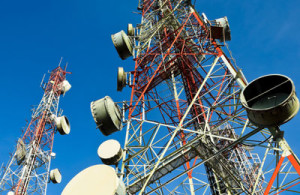 Five bars on your phone’s signal gauge wouldn’t mean a fast Internet connection unless there is a fat enough pipe between the cell tower and the wired Internet to carry all the traffic. Upgrading these pipes, known as backhaul, is a high priority for mobile operators.
Five bars on your phone’s signal gauge wouldn’t mean a fast Internet connection unless there is a fat enough pipe between the cell tower and the wired Internet to carry all the traffic. Upgrading these pipes, known as backhaul, is a high priority for mobile operators.
As consumers use more smartphones, tablets and other devices, the need for backhaul capacity is growing at an estimated compound annual growth rate of 70 percent. Powerful and efficient new wireless standards, especially LTE, allow operators to solve performance problems on radio access networks. As they invite subscribers to use cellular for more demanding applications, carriers want to make sure they don’t create a new performance problem.
They also need to change the mix of technologies they use for backhaul, moving aggressively from copper lines to fibre, and in some cases, microwave.
The mobile backhaul is the aggregation network and grooming of traffic from all sites into the core and has become a serious bottleneck that needs to be re-architected to boost capacity and open the bottleneck for better performance and utilisation.
Why is mobile backhaul critical for data communications? “What we know is that the biggest single reason for customer loyalty is network performance,” says Matthew Smith, Head of Next-Generation Transport and Convergence, Ericsson Middle East and North East Africa Region. “To secure high network performance, we not only need to advance the radio network but also we need to put a lot of focus on the backhaul network, to avoid it becoming the ‘bottleneck’. This focus happens simultaneously with network convergence – mobile, fixed & enterprise services and infrastructure all successfully coinciding.”
Ihab Ghattas, Assistant President, Huawei Middle East, offers another perspective: “The region’s eager adoption of high-speed mobile broadband services is challenging legacy mobile backhaul in three major areas,” he says. “First is site acquisition and usage. To support larger capacity and richer mobile broadband services, many mobile networks require new type of air interfaces and base stations like Femto and Pico.”
He adds that the second challenge relates to overlapped investment. As GSM, UMTS and LTE have different interfaces, corresponding backhaul technologies include microwave, SDH/PDH, and so on. These network elements have become an obstacle to realise smooth evolution of mobile backhaul. Lastly, in a legacy network all operation and maintenance (O&M) commands and parameters are input manually. This can no longer meet the requirements of the all-IP network O&M.
Fibre backhaul should be good news for mobile subscribers who want to keep using more data. Once a bundle of optical fibre is installed, it can carry more data almost without limit as long as the equipment on either end of the fibre is upgraded.
Gamal Hegazi, CTO, FTTH Mena Council, says fibre is the best backhaul medium for many operators for several compelling reasons. “It provides future-proof bandwidth evolution to match the spike in radio access capacity enabled by LTE Advanced and carrier aggregations. It also provides the needed delay and jitter tolerance as well. The opex involved in maintaining and managing fibre backhaul provides a considerable advantage giving operators an edge in controlling their costs.
Balakrishan Shanmugham, VP and Practice Leader for Communications, Cognizant, agrees, “Fibre is one of the best backhaul solutions to support the burst nature of data traffic generated due to transport of quality-sensitive services such as video calling, movie-on-demand, and interactive services. Fiber deployment is a one-time exercise that can support multiple iterations on bandwidth expansion by deploying various logical resources. Therefore, it is more cost-effective in increasing backhaul capacity than any other mechanism such as copper, which provides limited ability to enhance bit rates while retaining traffic quality in a long-haul network.”
Fibre vs. Microwave
Looking at the backhaul options, operators can choose either fibre or microwave. Globally, an increasing percentage of new investment in backhaul is in microwave. So that begs the question, isn’t wireless backhaul meeting current and medium-term capacity requirements?
“Many actually prescribe microwave for LRAN (Low Radio Access Network),” Smith says. “If an operator has frequency licenses, then microwave is extremely quick and economical to install, and provides a very fast time to market. Incidentally, microwave is, by far, the most used technology for LRAN backhaul. However the key question is: can microwave scale to deal with the rising capacity needs of radio base stations? Also the rising variety of wireless access such as picos, micros, Wi-Fi, etc.?”
Saleem AlBlooshi, Executive VP – Network Development & Operations, du, says the main challenge of wireless backhauling is the frequency limitation and this will depend on the size of traffic carried on the network and this can be evaluate on a case by case basis. “The existing wireless suppliers have developed new products with new frequency bands that can offload the current “traditional” frequency bands, so with the introduction of these technologies the network design would have some flexibility to provide higher capacities in the absence of fibre. For example, the E-band can offer up to 4xGbps MW link in one direction but for sure such high capacity over radio wouldn’t be a permanent replacement of fiber but it will be an intermediate solution till you get the fiber available.”
Shanmugham says wireless backhaul is good to support immediate backhaul requirements, provided the mobile network is 2G or sub-3G variant and has moderate data growth rate (around 10 to 15 percent). It also depends on the terrain and operating conditions. “Wireless backhaul may start facing limitations if customers start using bandwidth-hungry applications or quality-sensitive interactive services.”
Hegazi agrees that though microwave has improved dramatically in terms of capacity using better coding techniques as well as adaptive modulation feature sets, the limited spectrum capacities and line of sight issues along with civil works associated with the project are factors that have to be taken into consideration.
How does the backhaul scenario in the Middle East compare with mature telecom markets? “Since mobile backhaul is a major component of mobile OPEX, controlling its cost is key to turning mobile broadband revenue into profit. In the Middle East, current mobile backhaul networks face a number of challenges including complex O&M for the massive scale of cell sites, time-consuming service provisioning, and inefficient network utilisation. Large-scale backhaul networks are also needed to accommodate the region’s growing 4G LTE customer base – particularly in the Gulf,” says Ghattas.
Hegazi says in the MENA region, the trend is more towards utilising fibre as a complement or full backhaul medium for wireless and heterogeneous networks deployment. Most of the operators are utilising and combining a last mile microwave strategy coupled with fibre in subsequent concentration points and are departing from a pure microwave model.
In the Gulf region, service providers that have invested heavily in fiber to the home and metro fiber technologies are leveraging these access and metro networks to groom traffic from 4G network cell sites, which gives them future sustainability and better opex equations with affordable cost per bit.
Smith from Ericsson says some of the Middle East markets are incredibly mature and deploying the most advanced backhauling technologies. “The Middle East is one of the largest and fastest growing backhaul markets right now. Saudi Arabia is going for more fiber and countries like Qatar have an advanced NBN-driven rollout. But overall the Middle East has a very low percentage of fibre used for backhaul as rights of way issues and security situations can be difficult, as can terrain.”
Another new variable in the backhaul equation is the introduction of small cells and Wi-Fi base stations. Carriers don’t yet know how many of these they will end up using. But what is for sure is that backhaul is an element of a mobile network where there are no shortcuts for the operators. They just have to spend the money and do it.





